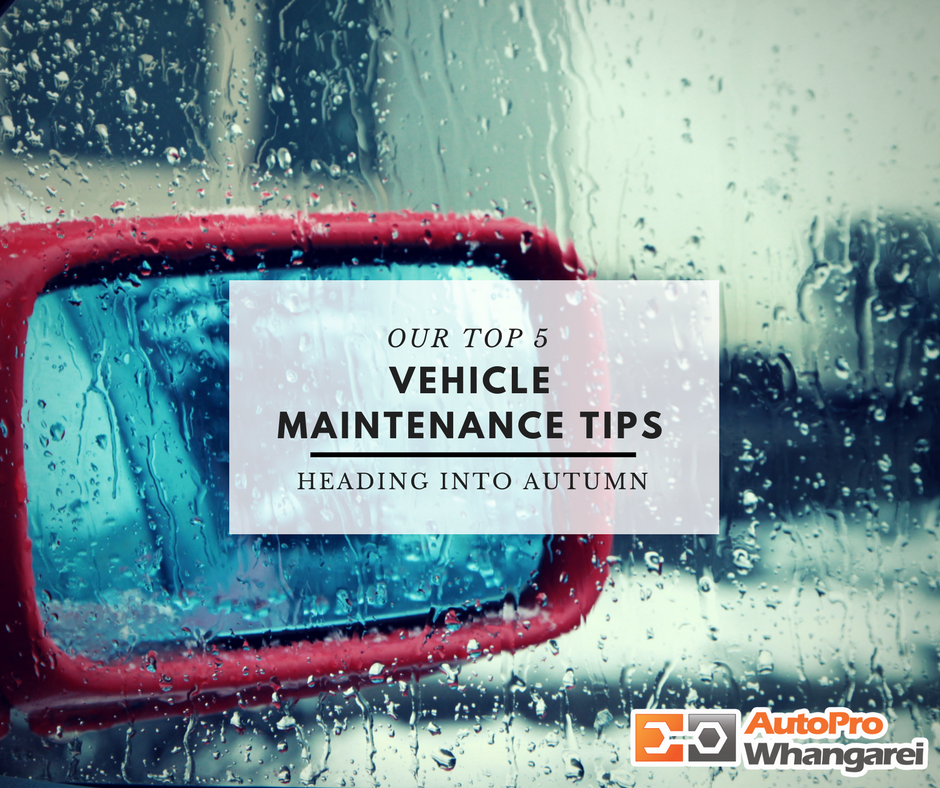
Our Top 5 Vehicle Maintenance Tips Heading Into Autumn & Winter
It’s that time of the year when the leaves begin to fall, the kids are settled back in school and cooler evenings have begun.
Take advantage of the lull to prepare your vehicle for the winter ahead with our top 5 vehicle maintenance tips that will help you through the time of year when you're most likely to break down.

Tip # 1 – Your Battery
It's often more difficult for a battery to operate in cold weather than it is for a battery to operate in warm weather. As a result, a battery that's merely weak during the summer could turn into a dead battery during the winter.
Our advice is to have a battery load test with us free of charge before winter starts, to make sure it's still in good working order. If it isn't, buy a new battery as soon as possible so you'll never have to worry about being stranded or left in a cold parking lot with a car that won't start.
Batteries don’t always give warning signs before they fail, it is advisable to replace batteries that are more than three years old.
*Free of charge for accessible under bonnet batteries.

Tip # 2 – Your Tyres
Check your tyres, including pressure and tread depth. Uneven wear indicates a need for wheel alignment. Tyres should also be checked for bulges and bald spots. During winter, tyre pressure should be checked regularly as tyres lose pressure when temperatures drop.
There is no time of year when inadequate tyre tread becomes more apparent than when you are driving on slippery, wet roads. Tyres with low tread are fine when roads are dry, but can quickly create a dangerous situation in the winter. Have your tyres inspected in the autumn and replace, if needed, before road conditions worsen.
Don’t forget to check your spare and make sure you have a jack fitted to your vehicle.

Tip # 3 – Your Wipers
Inspect your blades for signs of cracking or discoloration. Blades are likely to wear out not only from use, but from the stress of water, extreme temperatures, and even the constant exposure to the UV radiation of the sun.
Even if it’s not raining, grime can still accumulate on the blade. Every three months or so wipe them down to ensure there are no streaks on your windshield and there is no corrosion build up on the blade. Take a damp clean cloth and wipe down the blades from end to end, removing all of the dirt and grime. It just takes a few seconds and it will prolong their lifespan.
Wiper blades should be replaced every six months to a year or as soon as you notice a difference in driving visibility.

Tip # 4 – Your Brakes
Have your brake system checked, including brake pads, rotors, drums & fluid. Brakes are critical to vehicle safety and particularly important when driving on slippery wet roads.
Driving on worn brake pads not only decreases stopping power, but can damage brake rotors as well.
Is your vehicle due for a service? Why not take advantage of our Premium Service package which includes a full check of your vehicle's braking system to ensure everything is up to spec & you are able to stop when you need to. (Also includes a full 75 point safety check) autoprowhangarei.co.nz/car-service/

Tip # 5 – Your Lights
One major hazard with winter driving is that the sun sets earlier in the day, which means there's less daylight, especially on your commute home. As a result, you'll want to do everything you possibly can to make sure all of your vehicle's lights are in excellent shape, providing the brightest possible illumination they can. If a bulb is out, fix it before winter starts. If your headlights are foggy or yellow, consider replacing them or look into a restoration kit.